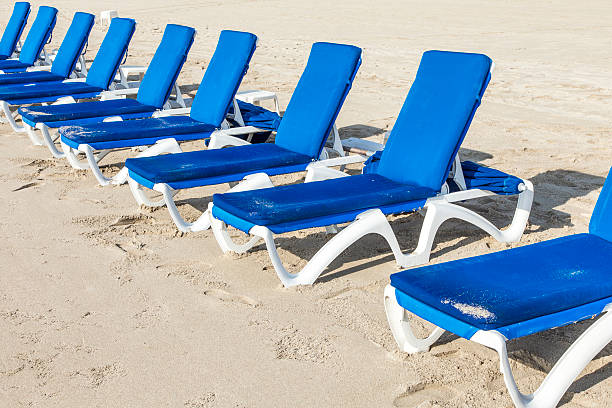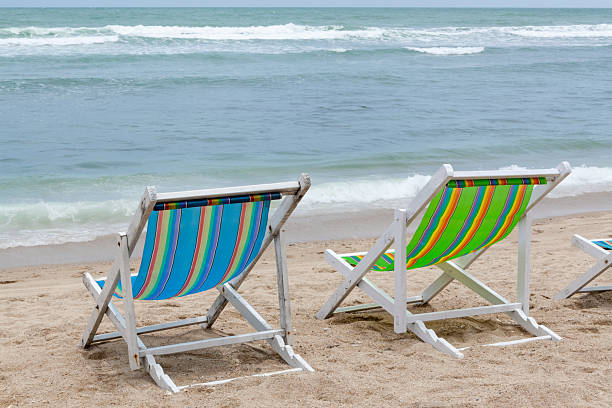When you think of a relaxing day at the beach, what comes to mind? For many, it’s the feeling of warm sand beneath their feet, the soothing sound of waves crashing on the shore, and the comfort of lounging on a well-chosen beach chair. Beach chairs are essential to a great beach day, providing comfort, convenience, and style. With so many options available, choosing the perfect beach chair can be overwhelming. This guide will help you understand what to look for when selecting the ideal beach chair for your needs.
Why is a Beach Chair Important?
A beach chair is more than just a piece of outdoor seating; it’s your ticket to relaxation. Unlike regular chairs, beach chairs are specifically designed to withstand the sandy, salty environment of the beach while providing comfort for extended periods. They elevate you off the hot sand, keep you dry, and often come with added features like cup holders, sunshades, and adjustable reclining positions. A good beach chair can make the difference between an enjoyable day by the water and an uncomfortable one.
Types of Beach Chairs
There are several types of beach chairs to choose from, each with unique features designed for different preferences and beach activities:
- Classic Folding Beach Chairs: These are the most traditional beach chairs, featuring a simple foldable frame and fabric seat. They are lightweight, easy to carry, and usually made from materials like aluminum and canvas. Their low profile allows you to stretch out your legs on the sand, making them ideal for sunbathing.
- Backpack Beach Chairs: These chairs have a unique design with shoulder straps, allowing them to be carried like a backpack. They often come with storage pockets and compartments, making it easy to carry other beach essentials. Backpack beach chairs are perfect for those who need to walk a distance from their parking spot to the beach.
- Reclining Beach Chairs: If you enjoy lounging and soaking up the sun in different positions, a reclining beach chair is the way to go. These chairs come with adjustable backs that allow you to recline to various angles, from upright seating to fully flat for sunbathing. They often feature cushioned headrests for added comfort.
- Canopy Beach Chairs: Sun protection is crucial when spending long hours at the beach. Canopy beach chairs come with a built-in sunshade or canopy that helps shield you from the sun’s harmful rays. They provide extra comfort and protection, allowing you to enjoy the beach without constantly reapplying sunscreen.
- Zero Gravity Beach Chairs: These chairs are designed to distribute your weight evenly across the chair, providing maximum comfort and support. They are ideal for those who suffer from back pain or want a chair that offers a more luxurious lounging experience. Zero-gravity beach chairs can also be reclined fully and are often equipped with cup holders and storage pouches.
- Sand Chairs: Sand chairs are low-profile beach chairs that sit directly on the sand. They are lightweight and easy to carry, making them perfect for those who prefer sitting closer to the ground. Sand chairs are great for casual beachgoers who want a simple, no-fuss seating option.
Materials and Durability
When choosing a beach chair, it’s important to consider the materials used in its construction, as this will affect its durability, comfort, and maintenance. Common materials include:
- Aluminum: Aluminum frames are lightweight, rust-resistant, and durable, making them a popular choice for beach chairs. They are easy to carry and withstand exposure to saltwater without corroding.
- Steel: Steel frames are heavier than aluminum but provide more stability and support. However, steel is prone to rust if not properly coated or maintained, so it’s less ideal for frequent beach use.
- Wood: Wooden beach chairs offer a classic, stylish look. They are durable and can be quite comfortable, but they require regular maintenance to protect them from water damage and UV exposure.
- Plastic: Plastic beach chairs are lightweight, affordable, and resistant to water and rust. However, they may not be as durable as metal or wooden options and can break or crack over time.
- Fabric: The seat and backrest of beach chairs are typically made from synthetic fabrics like polyester or mesh. These materials are breathable, quick-drying, and resistant to fading from sun exposure. Look for fabrics that offer UV protection to prevent damage from prolonged sun exposure.
Key Features to Consider
When selecting a beach chair, there are several features to consider to ensure maximum comfort and convenience:
- Portability: Look for a beach chair that is lightweight and easy to carry. Features like folding frames, shoulder straps, and compact designs can make transporting your chair to and from the beach easier.
- Weight Capacity: Check the weight capacity of the chair to ensure it can support your body weight comfortably. Most beach chairs support between 200 to 300 pounds, but some models can accommodate more.
- Adjustability: Consider how adjustable the chair is. Chairs with multiple reclining positions offer more versatility and comfort, allowing you to sit upright or lay back and relax.
- Comfort: Look for chairs with padded seats, headrests, and armrests for added comfort. Some chairs also have ergonomic designs that provide better support for your back and legs.
- Additional Features: Extra features like cup holders, storage pockets, towel bars, and coolers can enhance your beach experience by providing convenience and easy access to essentials.
- Weather Resistance: Choose a chair made from materials resistant to the elements, such as rust-resistant frames and UV-protected fabrics. This will ensure your chair lasts longer and remains in good condition despite exposure to sun, sand, and saltwater.
Caring for Your Beach Chair

Proper maintenance of your beach chair is essential to extend its lifespan and keep it looking and functioning like new. Here are some tips for caring for your beach chair:
- Rinse after Use: After each use, rinse your beach chair with fresh water to remove sand, salt, and debris. This helps prevent rusting and fabric degradation.
- Dry Thoroughly: Make sure your chair is completely dry before folding and storing it to prevent mold and mildew growth.
- Store Properly: Store your beach chair in a cool, dry place away from direct sunlight when not in use. This will help prevent fading and damage from UV exposure.
- Check for Wear and Tear: Regularly inspect your chair for signs of wear and tear, such as frayed fabric, loose screws, or rusted frames. Repair or replace damaged parts as needed to ensure safety and functionality.
Conclusion
A beach chair is more than just a piece of furniture; it’s an investment in comfort and relaxation. With so many styles, materials, and features, there’s a perfect beach chair for everyone. Whether you prefer the simplicity of a classic folding chair, the convenience of a backpack chair, or the luxury of a zero-gravity model, understanding what to look for will help you choose a chair that meets your needs and enhances your beach experience. So, the next time you head to the shore, make sure you have the perfect beach chair to relax and enjoy your day in comfort and style.





